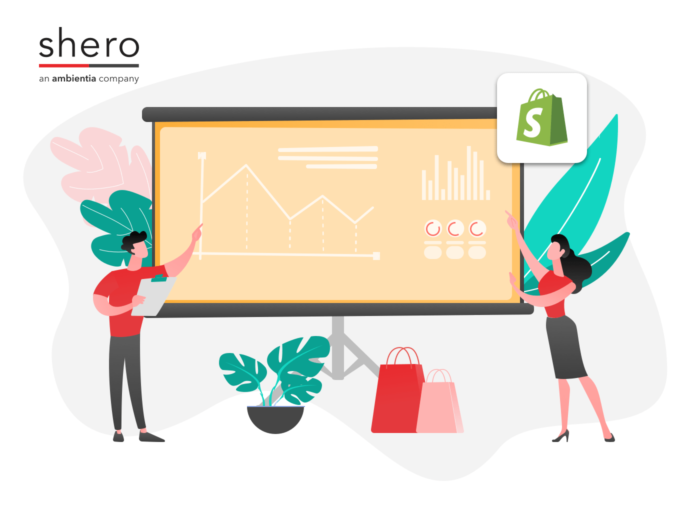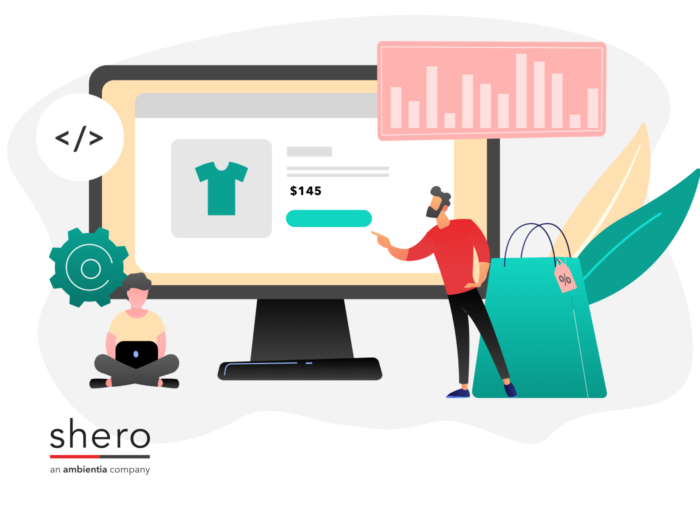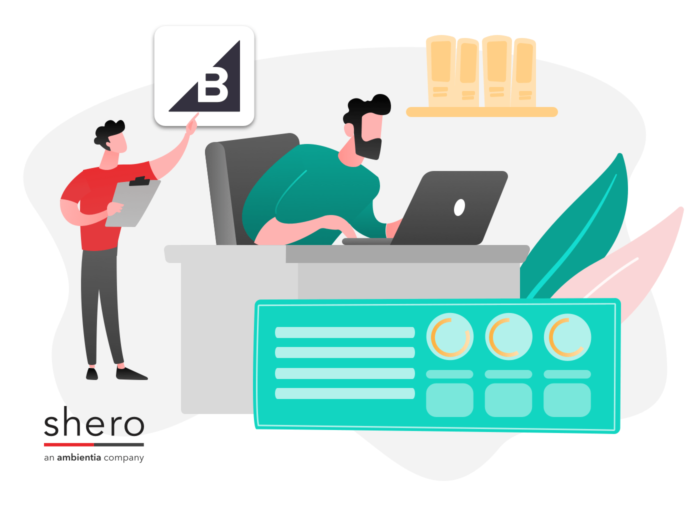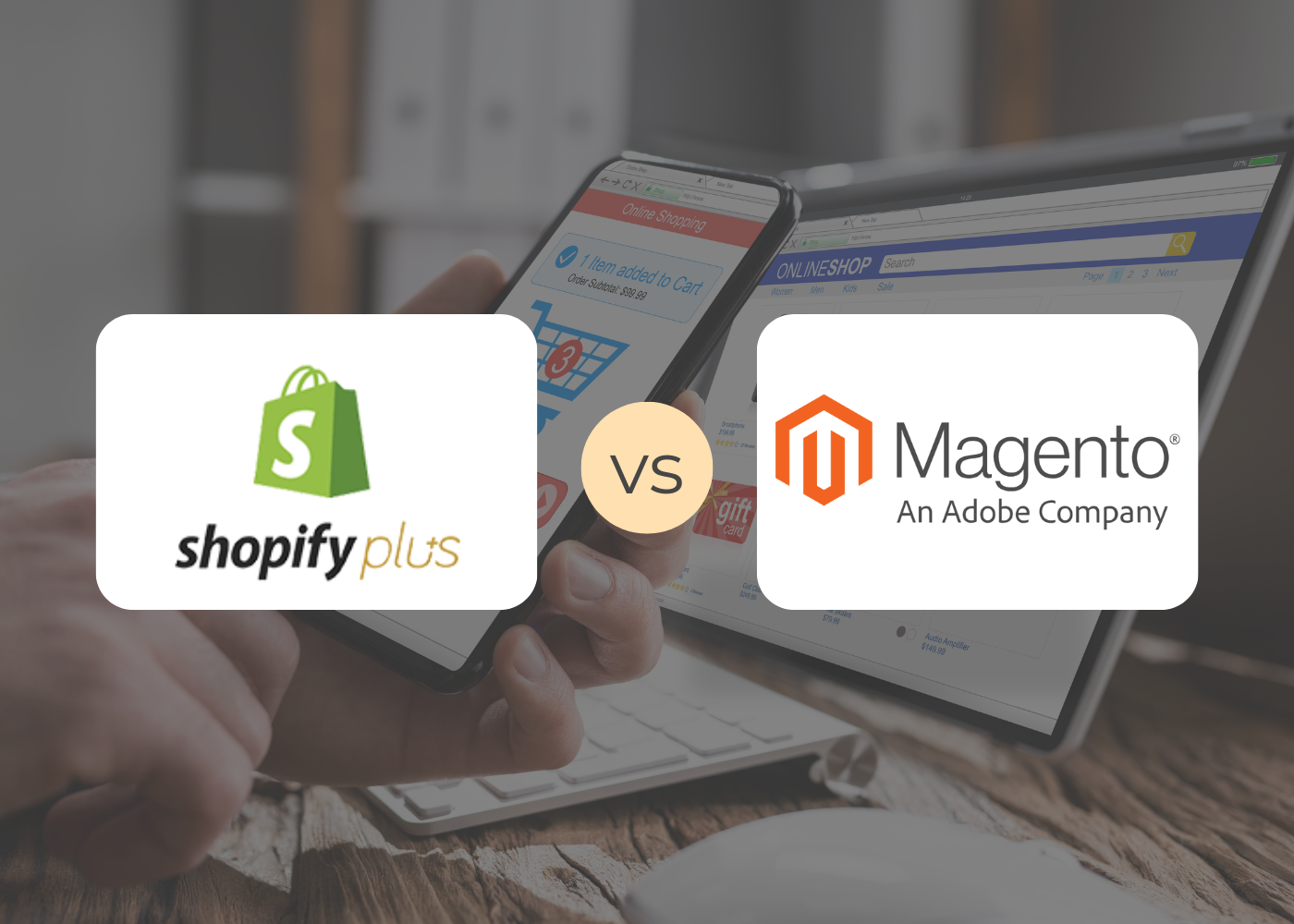When it comes to scaling your eCommerce store, choosing the right platform is key — and if you’re undecided between Shopify vs BigCommerce, you’re not alone.
Choosing an eCommerce platform can be a detailed process. After all, with so many platforms to choose from — Shopify, BigCommerce, WooCommerce, Adobe Commerce (formerly Magento Commerce), to name a few — it can be challenging to figure out which platform has the features and functionality you need, while maintaining your budget.
In this guide, we’ll make side-by-side comparisons of BigCommerce and Shopify and discuss the following:
Table of contents
We’ll start with the basics, or skip ahead using the links above to find what’s most relevant for you.
What is Shopify?

Shopify is an all-in-one eCommerce platform that helps businesses — from small brick-and-mortar businesses to enterprises — start, manage, and grow their eCommerce businesses.
Whether you have a physical store and are looking to expand by adding an eCommerce store or are strictly an eCommerce business, Shopify can be an option for your business.
How Does Shopify Work?
Shopify is a cloud-based subscription (SaaS or subscription as a service) service. With a subscription service, you don’t need to download any software; instead, you log into the Shopify website to gain access.
Because Shopify is on a subscription model, you pay Shopify a monthly or yearly subscription fee to access the platform, including all included features like your website, blog, and online store.
Some of Our Favorite Shopify Features
Shopify’s Main Product: The eCommerce Platform
Shopify’s main product includes everything you need to get started selling online. Everything is included in your plan, from templates to design the look of your store to shopping cart functionality and payment processing.
Available Shopify Upgrades
Shopify offers additional services that help you manage and grow your business—for an additional fee. Some of these services include access to capital and faster payment options.
Third-party Apps
Sometimes you need additional features and functionality to run your store efficiently. From the Shopify App store, you can choose from thousands of Shopify-approved apps built by third-party developers.
Shopify vs BigCommerce Business Models
Physical products only
In this eCommerce business model, you sell physical products to your customers. Customers might buy online and pick up in-store (BOPIS) if you have a physical storefront. If not, you will ship products to your customers.
Digital products only
Here, you sell digital products—eBooks, templates, stationary, planners, and more—to customers for immediate download. Because these are digital products, there’s no need to pack and ship products. Plus, both you and your customers avoid shipping costs.
Services only
In this business model, you sell services from your eCommerce website. Let’s say you offer coaching or web design services. Instead of invoicing your customers after services are performed, customers purchase available services upfront from your website.
Dropshipping model
With drop shipping, you sell physical products—without buying, storing, or shipping them. How? By middle manning sales. For instance, when a customer buys a product from your online store, a third party—the product wholesaler—fulfills and ships the order to your customer. You get a cut of the profit by marking up the merchant’s price.
Print-on-Demand (POD) model
Print on demand is a dropshipping model where you create a design and use a third-party service to print, fulfill, and ship products, like mugs, t-shirts, mousepads, and more. Printful and Printify are two examples of Shopify POD apps.
Hybrid (combination of any of the above)
To increase revenue opportunities, you might include all the above-listed business models in your eCommerce business. For instance, say your core business is interior design (a service). Additional revenue streams could include kitchen design eBooks, space planning templates, and color charts (digital products). Customers can also buy your exclusive line of accessories, like drapes, pillows, and housewares (products).
What is BigCommerce?
BigCommerce is one of the top names in eCommerce — here’s why.
Not only are BigCommerce websites designed for an easy and enjoyable shopping experience — they also offer high performance, deeper analytics, and competitive pricing.
With a BigCommerce store you can enhance customer experience through built-in apps, increase site speed, shop the BigCommerce marketplace for more integrations, and take operations to the next level.
What we love about BigCommerce
Unlimited products, file storage, and bandwidth
Scaling your store is easier when there are no limits on catalog size, storage space or the number of monthly requests your website can receive. That means better bandwidth and load time, more product availability, and — most importantly — a better overall customer experience.
It’s important to note, however, that even with unlimited product listings, BigCommerce does place a cap on actual sales based on which plan you have: $50,00 annually for Standard, $180,000 for Plus, and $400,000 on the Pro plan. Enterprise-level plans have no cap.
Single-Page Checkout
One of the best ways to reduce cart abandonment is by making the checkout process simple. The more effort a customer has to go through in order to make a purchase, the less likely they will follow through to the end. BigCommerce understood this when creating their native single-page checkout system that removes distractions and creates a more streamlined end to the customer journey.
Want to learn more about sales opportunities at checkout? View our video chat with partners ShipperHQ on 5 Ways to Create Better Customer Experience at Checkout.
Persistent Cart
Available on the “Plus” plan or higher, this feature allows customers to move back and forth between devices without losing their shopping cart. If a customer begins shopping on desktop, but wants to finish their purchase later, the cart will still be intact on mobile. It also allows the cart to remain the same after a customer logs in to their account.
Learn more about 12 of the best BigCommerce features here.
Now let’s compare Shopify to BigCommerce.
Shopify vs. BigCommerce – What’s the Difference?

While Shopify and BigCommerce have a lot of similarities, there are some distinct differences.
For instance, BigCommerce has more built-in features at no additional cost than Shopify. While you can get some of the same features in Shopify — it will cost you time and money. First, you’ll have to sift through Shopify’s app store to find the needed app. Then, you’ll have to pay for it.
On the other hand, with BigCommerce, most of the features you need — including customizations — are built-in and free of charge.
BigCommerce Discounts
Discounts and promotions drive eCommerce sales. BigCommerce has over 70 discount types—including advanced discount types from cart-level discounts, tiered pricing, and customer-group-specific pricing—out of the box. No third-party apps are required, and there are no fees.
Shopify Discounts
Compared to BigCommerce, Shopify’s discount features are limited. While there are flexible options, according to Shopify’s site, combining discounts is only offered to “certain merchants.” Additionally, combined discounts are not available on Shopify. For instance, “order discounts can’t be combined with product discounts.” Shopify also doesn’t have cart-level deals or discounts that are automatically applied. A third-party app is required to get this type of functionality.
Over the past two years, Shopify has invested in their discounts and promotions and has launched BOGO discounts—but they are still lagging behind BigCommerce in the discount area.
BigCommerce SEO Features:
BigCommerce users have many features that can help improve SEO, from customizing URL structures to the Akamai Image Editor automatically optimizing images by the device. With a traditional category/subcategory structure, search engines can understand and crawl the BigCommerce stores effectively, improving SEO rankings.
Shopify SEO Features:
Shopify users cannot customize URL structures. For example, the following can’t be removed from the URL structure in Shopify: “/categories/,” “/products/,” or “/pages/.” Instead of the proper category/subcategory structure, Shopify users must use collections. This condition-based feature is great for showcasing products, but it’s not SEO friendly. And, unlike BigCommerce, SEO image optimization is not automatic, and there is no similar app or feature within Shopify. Users can download a bulk image sizer, however.
BigCommerce Conversion Optimization:
BigCommerce offers tools to enable customer retention and improve conversion rates with features like streamlined checkout experiences, mobile optimization, and guest checkouts.
Additionally, BigCommerce’s themes include features that reduce cart and checkout friction and make upselling and cross-selling products easier. Features that allow customers to view products quickly and estimate taxes and shipping fees within the cart are also included.
Shopify Conversion Optimization:
While Shopify has more free themes (10 themes and 22 variations) than BigCommerce (5 free themes with 12 variations), the ability to customize themes is important, too.
Shopify’s free themes are barebones, requiring a lot of app installs (which can slow down your site) or the need to hire a developer for customizations. Also, once products are in cart, there’s no way for a customer to make changes to the products, like selecting different colors or sizes from the cart—unless they use a third-party app.
To learn more about BigCommerce’s features, click here.
Benefits of BigCommerce vs Shopify

✅ Built-in Customization Features — at No Additional Cost
BigCommerce has many built-in features available for free, like storefront conversions, API-driven commerce, headless commerce, cross-channel eCommerce, B2B, international commerce, and more. While most standard functionality is included, some third-party apps are also available.
✅ Cheaper Credit Card Processing Rates and No Transaction Fees
BigCommerce’s credit-card processing fees are cheaper than Shopify’s, regardless of the credit card processing provider. Shopify transaction fees are 2% on Shopify Basic and 0.5% on Shopify Advanced.
✅ Product Options and Variants
BigCommerce dominates Shopify here. Shopify only allows you to show three product options to customers without third-party apps or coding. BigCommerce, on the other hand, let’s you create 250 product options per product. Additionally, BigCommerce’s variant limit is 600 per product.
Benefits of Shopify vs BigCommerce
✅ Design Templates
Currently, BigCommerce only has five free design templates with 12 variants and approximately 200 paid templates. If you’re on a tight budget, you’ll be limited in your design choices. Since many templates are just color variants, the free templates feel sparse compared to Shopify’s templates.
✅ No Sales Limits
Unlike Shopify, BigCommerce has annual sales limits. You will have to pay an additional fee to go beyond the limits. For instance, the BigCommerce Pro plan will cost you an additional $150 per month per additional $200K in sales. You will be forced to upgrade if you go beyond the per-plan limits.
Here are the annual limits by BigCommerce plan. Remember, Shopify doesn’t have these limits.
- BigCommerce Standard: $50,000 (annual)
- BigCommerce Plus: $180,000 (annual)
- BigCommerce Pro: $400,000 (annual)
- BigCommerce Enterprise: varies (annual) – contact BigCommerce for more information.
✅ More Payment Gateways
There are several ways to accept credit or debit card payments online on BigCommerce. You can use PayPal (Braintree) or a third-party payment gateway provider (fees vary by plan). While Shopify has over 100 payment gateway providers on its platform, BigCommerce only has 45, depending on your geographic location.
Payment processing fees are provider depending so that each provider can have different monthly fees. Some might charge transaction fees. These fees are from the provider—not BigCommerce. On the other hand, Shopify charges transaction fees for using a third-party gateway provider.
Which Pricing is Better: BigCommerce vs Shopify
With respect to pricing, BigCommerce and Shopify are neck and neck—with Shopify being only slightly cheaper than BigCommerce by $0.95 for all comparable plans:
Which pricing is best for you? Well, that will depend on the most important features of your business.
View our Ultimate Guides to eCommerce Pricing:
In this guide, you’ve learned the key differences between Shopify and BigCommerce. Because your business is unique, it may have specific needs requiring eCommerce expertise.
Want help choosing the best eCommerce platform for your business? Contact us.
Gentian, CSO and co-founder of Shero Commerce, guides the company and client digital strategies. He's an expert in technical SEO, Inbound Marketing, and eCommerce strategy.






